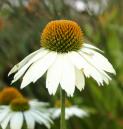The Classes or Tribes contained in this Worke, are these:
- 1 Plantae Odoratae. Sweete smelling Plants.
- 2 Catharticae sive Purgantes. Purging Plants.
- 3 Venenosae, Narcoticae, Nocivae & Alexipharmacae. Venemous, Sleepy, and Hurtfull Plants, and their Counterpoysons.
- 4 Saxifrage Plantae, Nephriticae sive Calculum frangentes. Saxifrages, or Breakestone Plants.
- 5 Plantae Vulnerariae & Ferruminantes, id est, Consolidantes. Vulnerary or Wound Herbes.
- 6 Plantae Refrigerantes & Intubaceae. Cooling and Succory-like Herbes.
- 7 Plantae Calidae & Acres. Hot and sharpe biting Plants.
- 8 Vmbelliferae. Vmbelliferous Plants.
- 9 Cardui & Spinosae Plantae. Thistles and Thorny Plants.
- 10 Filices & Herbae Capillares. Fearnes and Capillary Herbes.
- 11 Legumina. Pulses.
- 12 Cerealia. Cornes.
- 13 Gramina, Iunci & Arundines. Grasses, Rushes and Reedes.
- 14. Plantae Paludosae Aquaticae & Marinae, Musci & Fungi. Marsh, Water and Sea Plants, and Mosses, and Mushromes.
- 15 Miscelanea. The Vnordered Tribe.
- 16 Arbores & Frutices. Trees and Shrubbes.
- 17 Exoticae & Peregrinae Plantae. Strange and Outlandish Plants.
- Theatro Botanico Appendix. An Appendix to the Theater of Plants.

